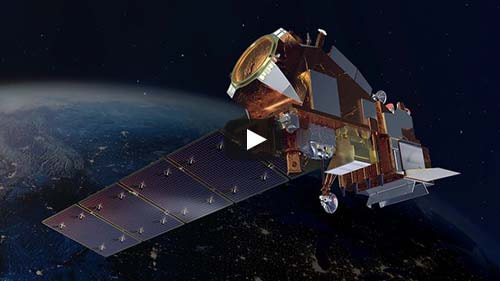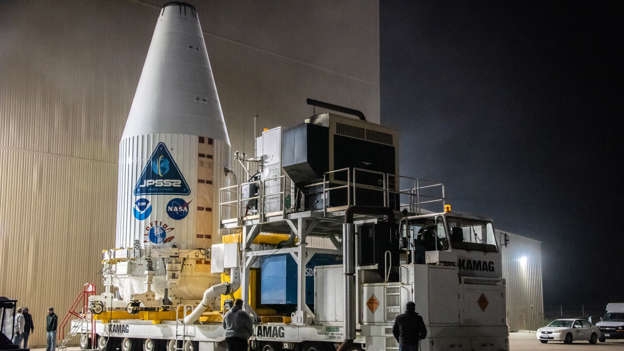- Home
- Magazines
-
Newsletters
- 19 July 2024
- 12 July 2024
- 5 July 2024
- 28 June 2024
- 14 June 2024
- 7 June 2024
- 31 May 2024
- 24 May 2024
- 17 May 2024
- 10 May 2024
- 3 May 2024
- 26 April 2024
- 19 April 2024
- 12 April 2024
- 22 March 2024
- 15 March 2024
- 8 March 2024
- 1 March 2024
- 23 February 2024
- 16 February 2024
- 9 February 2024
- 26 January 2024
- 19 January 2024
- 12 January 2024
- 22 December 2023
- 1 December 2023
- 24 November 2023
- 10 November 2023
- 3 November 2023
- 27 October 2023
- 20 October 2023
- 13 October 2023
- 6 October 2023
- 29 September 2023
- 22 September 2023
- 15 September 2023
- 8 September 2023
- 25 August 2023
- 18 August 2023
- 11 August 2023
- 4 August 2023
- 28 July 2023
- 21 July 2023
- 14 July 2023
- 7 July 2023
- 30 June 2023
- 23 June 2023
- 15 June 2023
- 2 June 2023
- 26 May 2023
- 19 May 2023
- 12 May 2023
- 5 May 2023
- 28 April 2023
- 21 April 2023
- 14 April 2023
- 6 April 2023
- 31 March 2023
- 24 March 2023
- 17 March 2023
- 10 March 2023
- 3 March 2023
- 24 February 2023
- 17 February 2023
- 10 February 2023
- 3 February 2023
- 27 January 2023
- 13 January 2023
- 22 December 2022
- 15 December 2022
- 9 December 2022
- 2 December 2022
- 25 November 2022
- 18 November 2022
- 11 November 2022
- 4 November 2022
- Advertising
- Subscribe
- Articles
-
Galleries
- AOSH Firexpo 2024
- Midvaal Fit to Fight Fire 2024
- WoF KNP 2023 Gallery
- TFA 2023 Gallery
- DMISA Conference 2023
- ETS 2023 Gallery
- Drager Fire Combat and Rescue Challenge 2023
- AOSH Firexpo 2023
- Midvaal Fit to Fight Fire
- WC IFFD 2023
- NMU 13th Fire Management Symposium 2022
- JOIFF Africa Conference 2022
- ETS 2022 Gallery
- TFA 2022 Gallery
- IFFD 2018
- SAESI
- TFA
- WRC 2018
- WRC 2019
- A-OSH/Securex
- IFE AGM 2019
- ETS Ind Fire Comp Nov 2019
- ETS Challenge 2021
- Drager launch
- Drager Fire Combat and Rescue Challenge 2022
- TFA
- Contact
- Home
- Magazines
-
Newsletters
- 19 July 2024
- 12 July 2024
- 5 July 2024
- 28 June 2024
- 14 June 2024
- 7 June 2024
- 31 May 2024
- 24 May 2024
- 17 May 2024
- 10 May 2024
- 3 May 2024
- 26 April 2024
- 19 April 2024
- 12 April 2024
- 22 March 2024
- 15 March 2024
- 8 March 2024
- 1 March 2024
- 23 February 2024
- 16 February 2024
- 9 February 2024
- 26 January 2024
- 19 January 2024
- 12 January 2024
- 22 December 2023
- 1 December 2023
- 24 November 2023
- 10 November 2023
- 3 November 2023
- 27 October 2023
- 20 October 2023
- 13 October 2023
- 6 October 2023
- 29 September 2023
- 22 September 2023
- 15 September 2023
- 8 September 2023
- 25 August 2023
- 18 August 2023
- 11 August 2023
- 4 August 2023
- 28 July 2023
- 21 July 2023
- 14 July 2023
- 7 July 2023
- 30 June 2023
- 23 June 2023
- 15 June 2023
- 2 June 2023
- 26 May 2023
- 19 May 2023
- 12 May 2023
- 5 May 2023
- 28 April 2023
- 21 April 2023
- 14 April 2023
- 6 April 2023
- 31 March 2023
- 24 March 2023
- 17 March 2023
- 10 March 2023
- 3 March 2023
- 24 February 2023
- 17 February 2023
- 10 February 2023
- 3 February 2023
- 27 January 2023
- 13 January 2023
- 22 December 2022
- 15 December 2022
- 9 December 2022
- 2 December 2022
- 25 November 2022
- 18 November 2022
- 11 November 2022
- 4 November 2022
- Advertising
- Subscribe
- Articles
-
Galleries
- AOSH Firexpo 2024
- Midvaal Fit to Fight Fire 2024
- WoF KNP 2023 Gallery
- TFA 2023 Gallery
- DMISA Conference 2023
- ETS 2023 Gallery
- Drager Fire Combat and Rescue Challenge 2023
- AOSH Firexpo 2023
- Midvaal Fit to Fight Fire
- WC IFFD 2023
- NMU 13th Fire Management Symposium 2022
- JOIFF Africa Conference 2022
- ETS 2022 Gallery
- TFA 2022 Gallery
- IFFD 2018
- SAESI
- TFA
- WRC 2018
- WRC 2019
- A-OSH/Securex
- IFE AGM 2019
- ETS Ind Fire Comp Nov 2019
- ETS Challenge 2021
- Drager launch
- Drager Fire Combat and Rescue Challenge 2022
- TFA
- Contact
Follow us
Latest US weather satellite, set to scan storms like Nicole, launchedAs Tropical Storm Nicole neared Florida on Wednesday, 9 November 2022, a satellite passed 512 miles overhead, scanning for data to help meteorologists understand what was happening beneath the clouds and better predict what the storm would do next. On Thursday, 10 November 2022, on the other side of the United States, the satellite’s $1,4 billion successor rocketed into space. NASA and the National Oceanic and Atmospheric Administration (NOAA) launched an Atlas V rocket carrying the JPSS-2, the second of four satellites in a series known as the Joint Polar Satellite System, at 01h49am local time from Vandenberg Space Force Base in California.
The JPSS-2 will be key to observing and forecasting extreme weather for an expected life span of at least seven years. Along with its ability to observe the inner workings of storms like Nicole, the satellite’s instruments allow meteorologists to track wildfires, dust storms, sea ice and volcanic eruptions as the spacecraft orbits around Earth 14 times each day. It will complement NOAA’s GOES satellites, a pair whose orbits are such that they essentially remain stationary over North America, offering near-constant observations. But while the JPSS satellite passes over any given spot only twice a day, what it does capture will be far more detailed. And it will add to a continuous stretch of detailed observations from satellites that orbit Earth from pole to pole and have contributed significantly to improvements in weather predictions as much as a week in advance, said Jordan Gerth, a meteorologist and satellite scientist with NOAA’s National Weather Service. “Weather forecasts have been steadily getting better,” Gerth said. “We know that a lot of that improvement, particularly in the last 20 years, is due to polar-orbiting satellites.” After it settles into its orbit about a week after launch, JPSS-2 will become known as NOAA-21, joining JPSS-1 launched in November 2017, then becoming NOAA-20. Launches of the next two JPSS satellites are scheduled for 2027 and 2032, ensuring continuous observations by the series through at least the late 2030s and likely longer. The launch schedule aims to ensure redundancy but satellites often outlast their original mission horizons. The JPSS series builds upon observations of similar satellites including the NOAA-NASA Suomi National Polar-orbiting Partnership, or Suomi NPP, and satellites operated by EUMETSAT, the European operational satellite agency. The more than two-decade record of consistent data from such satellites help Earth scientists better understand “where we’ve been and where we’re going from a climate perspective,” said Tim Walsh, director of the JPSS programme at NASA. The JPSS-2 launch will mean NOAA operates 17 active satellites monitoring the planet and near space. The latest GOES satellite launched earlier this year. Also on board the Atlas rocket on Thursday was the Low-Earth Orbit Flight Test of an Inflatable Decelerator, or LOFTID, a mission to test a new type of heat shield that would be used in missions to Venus, Mars and Titan, Saturn’s largest moon. As Nicole nears Florida just weeks after Hurricane Ian devastated the peninsula, the situation will stress the value of the JPSS satellites, Gerth said. While a host of observations go into weather models hurricane forecasters use, the initial JPSS satellite that launched five years ago offers a unique view of the inner workings of storms. “It really is a CAT scan of storms and not just looking at the movement,” he said. Source: The Washington Post |
Quick navigation
Social
|
Who are we?FRI Media (Pty) Ltd is an independent publisher of technical magazines including the well-read and respected Fire and Rescue International, its weekly FRI Newsletter and the Disaster Management Journal. We also offer a complete marketing and publishing package, which include design, printing and corporate wear and gifts. |
Weekly FRI Newsletter |
© Copyright 2018 Fire and Rescue International. All Rights Reserved.







